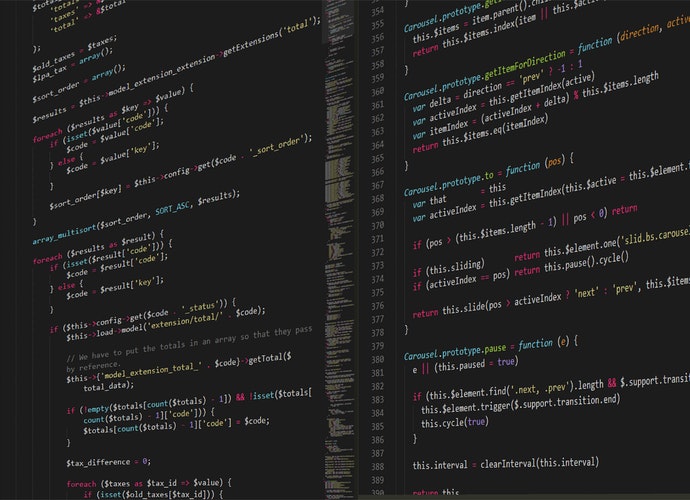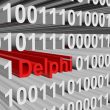In recent times, there has been an incline of various companies/businesses towards artificial intelligence. Many fields, such as the medical field, have benefitted a lot with artificial intelligence, such as with the advanced cancer diagnosis tools. Thus, it is safe to say that Machine Learning (ML) is a very crucial step for the advancement of various businesses/companies. To cater to this growing need, numerous deep learning libraries have been developed. Some libraries have been around for quite some time, and some have been launched very recently. Torch and Theano have been the oldest ones on the market, and TensorFlow and Caffe are considered to be the latest additions. However, TensorFlow and Theano are considered to be the most used and popular ones. TensorFlow vs. Theano- which one is right for you? Without any further ado, let’s discuss these two, along with a few other frameworks.
What is Theano?
Theano, a deep learning library, was developed by Yoshua Bengio at Université de Montréal in 2007. It can be run on both CPU and GPU, hence, providing smooth and efficient operation, and is based and written in Python. Theano is pretty famous with academic researchers, due to it being a deep learning library. It is considered as the grandfather of deep learning libraries. Theano is mostly used in extensive research-based tasks, deep learning tasks, and also for defining, optimizing and evaluating different mathematical operations. Furthermore, Theano provides its users with extensive unit-testing and self-verification. This helps in minimizing many types of errors. It uses a dynamic C code generation, which means that Theano has the ability to evaluate expressions faster.
Although Theano itself is dead now, the other open-source deep libraries which have been built on top of Theano are still functioning; these include Keras, Lasagne, and Blocks.
What is Tensorflow?
TensorFlow is a comprehensive, general deep learning library that was launched in late 2015. It is a Google open source project which replaced Theano. To date, it is considered to be one of the famous libraries. It is available on Linux, macOS, Windows, Android, and iOS platforms. Apart from being a deep learning library, it has various tools to help support reinforcement learning and numerous other algos. These include voice/sound recognition, text-based applications, image recognition, time series, and video detection. It is based on the languages of Python and C++ and is multi-GPU. TensorFlow comes with a sufficient amount of documentation for installation, along with tutorials, which makes running this framework hassle-free, even for beginners. Companies that have been using TensorFlow include Google, Twitter, Uber, Snapchat, GE Healthcare, PayPal, and Dropbox, just to name a few. Being run by Google means that it will stay around for a while, making it a safe investment.
Theano vs TensorFlow – Key Comparison Factors
The battle of the frameworks- Theano vs. TensorFlow. Which one is better? Let’s discuss this.
-Theano has been around since 2007, and TensorFlow has been around since 2017.
-Theano runs on cross-platform, whereas TensorFlow runs on Linux, macOS, Windows, and Android.
-Theano is written in Python, and TensorFlow is written in C++, Python, CUDA. However, they both provide CUDA support.
-Both the frameworks provide parallel execution.
-They both have trained models.
-TensorFlow has a faster compiling time than Theano, but the execution speed of TensorFlow is slower than Theano.
-Theano provides error messages, but those messages are cryptic.
-Theano is mostly used in carrying out Mathematical operations, whereas TensorFlow is used in voice/sound recognition, text-based applications, image recognition, time series, and video detection.
-The developer of Theano, Yoshua Bengio, had announced in 2017 that Theano would cease after its 1.0 version update, but the libraries built on top of Theano would still be available. On the other hand, TensorFlow is still available in the market.
Theano vs. TensorFlow is a very vast topic with a lot of technical details attached to it. The basic and the most important salient features of both frameworks have been discussed.
9 Best Deep Learning Libraries/Machine Learning Frameworks in 2020
Apart from Tensor and Theano, there are quite a lot of other frameworks available in the market. Let’s discuss a few of them.
- PYTORCH AND TORCH
Torch is one of the oldest frameworks which provides a wide range of algorithms for deep machine learning. It provides multi-GPU and has Lua as its base language. It is considered to be easy to set up as it has numerous sample codes and tutorials. However, it can be a bit difficult to set it up in CentOS. The platform for Torch is Linux, macOS, Windows, iOS, and Android. Torch also provides the user with helpful error messages. It is used by Facebook, Google, and Twitter, just to name a few. The main uses of Torch are machine learning, signal processing, parallel processing, computer vision, video, audio, image, and networking. Pytorch is a Python version of Torch, which was developed by Facebook in 2017. It was quick to become the machine learning researchers’ favorite. It is much more useful for small projects and prototyping. It also supports data parallelism and contains many pre-trained models.
- KERAS
This deep learning library, inspired by Torch, was created by Francois Chollet, a software engineering working at Google. Keras can be used as a high-level Application Programming Interface (API). This framework is considered a good option for beginners since it is ideal for learning and prototyping basic concepts. Furthermore, Keras generates easily readable and succinct codes.
- MXNET
It does not appear to be as widely used at TensorFlow, but this framework is considered to have the potential to have exponential growth in the near future. MXNet works on multiple GPUs with fast context switching. It is considered to have a clean and easily maintainable code. It comes with detailed documentation, which makes it good to use for both beginners and experienced users.
- GLUON
This framework can be used to create both simple and complex models. Gluon is based on MXNet and is considered as a good alternative to Keras. It is known to provide flexibility without any compromise on performance.
- CHAINER
Chainer is based in Tokyo, with engineers mostly from the University of Tokyo. It is considered to be faster than other Python-based frameworks. The codes are written in Python on top of CUPY and Numpy libraries. It has better GPU performance than TensorFlow.
- BIGDL
A deep learning library from Apache Stark. It makes it easy to make Spark and BigDL applications. It is known to achieve high performance due to its usage of Intel MKL/Intel MKL-DNN and multi-threaded programming in every Spark task.
- CAFFE AND CAFFE2
Caffe is a general deep learning framework that is based on C++. Yangqing Jia is the creator of Caffe2, who now works at Facebook. This framework is backed by Facebook after Torch. Caffe2 is considered to be lightweight. However, there is no commercial support for it.
- CNTK
Computational Network Toolkit (CNTK) is an open-source deep learning framework made by Microsoft. It can be included in Python, C#, or C++ or used through its model language called BrainScript. It is supported by macOS, Android, Linux, and Windows operating systems. The CNTK has both low level and high-level API for building neural networks.
- PADDLE
Parallel Distributed Deep Learning is a deep learning framework that was created and is supported by Baidu. Just like most of the deep learning frameworks, it offers a Python-based API.
TensorFlow vs Theano- Which is Better?
TensorFlow vs. Theano is a highly debatable topic. It all depends on the user’s preferences and requirements. Although Theano itself is dead, the frameworks built on top of it are still functioning. It would be nearly impossible to get any support from the developers of Theano. Hence, we can easily say that TensorFlow is better than Theano. Due to an increase in the use of Artificial Intelligence by various businesses/companies, deep learning framework developers are striving hard to launch quality frameworks into the market to fulfil the needs of various users and their companies. For each and every user, there is something out there in the market; if not, then there are developers who are offering customized frameworks for your businesses. The efforts of these developers help in solving various business challenges. The market comprises of other frameworks too, apart from just TensorFlow and Theano.
FAQs
What is Torch machine learning?
Torch is one of the oldest scientific computing framework that puts Graphic Processing Units (GPUs) first, which was developed in Brazil, during the 1990s. It is a scripting language program which was initially written in and offered on the Lua programming language but has now been ported to various other languages, such as Python (Pytorch) and C/C++. Torch provides support and a wide range of algorithms for machine learning. It is efficient and user friendly due to the use of LuaJit, the scripting language, which provides maximum flexibility to the user. Torch uses macOS, Windows, Android, iOS, and Linux as its platform. Since it is one of the oldest open-source machine learning library, it is used by many leading labs, such as Facebook, Google, and Twitter, just to name a few. Furthermore, Torch provides the best packages in machine learning, signal processing, parallel processing, computer vision, video, audio, image, and networking. You can also build arbitrary graphs of neural networks and parallelize them over CPUs and GPUs in the most efficient way possible.
What is Theano used for in machine learning?
Theano was developed by Yoshua Bengio at Université de Montréal in 2007. It is a Python library based deep open-source library, and it can be run on CPU and GPU. It is mostly used in extensive research-based tasks, deep learning tasks, and also for defining, optimizing and evaluating different mathematical operations. Theano calculates the gradient when determining the backpropagation error by deriving an analytical expression. As Theano runs on CPU and GPU, it is much faster than Python itself, providing a much faster and efficient operation. Numerous other open-source deep libraries have been built on top of Theano, such as Keras, Lasagne, and Blocks.
What is better than Tensorflow and Theano?
With an increase in the trend of artificial intelligence, the market has been flooded with numerous deep learning frameworks. Hence, you can easily find a framework that caters the best to your needs and requirements. However, Tensorflow tends to be the most famous deep learning framework today. If you are a beginner and want to figure out how these frameworks work, you can opt for Keras; you can choose Pytorch for research purposes.
Is Theano dead in 2020?
Theano itself is effectively dead, but the deep learning frameworks built on top of Theano, are still functioning. These include the more user-friendly frameworks- Keras, Lasagne, and Blocks. These three provide high-level frameworks for fast prototyping and model testing. In a statement released by its developer, Yoshua Bengio, on 28th September 2017, he stated that the development of Theano would cease after its 1.0 version update.
Start Gowing with Folio3 AI Today.
Connect with us for more information at [email protected]










